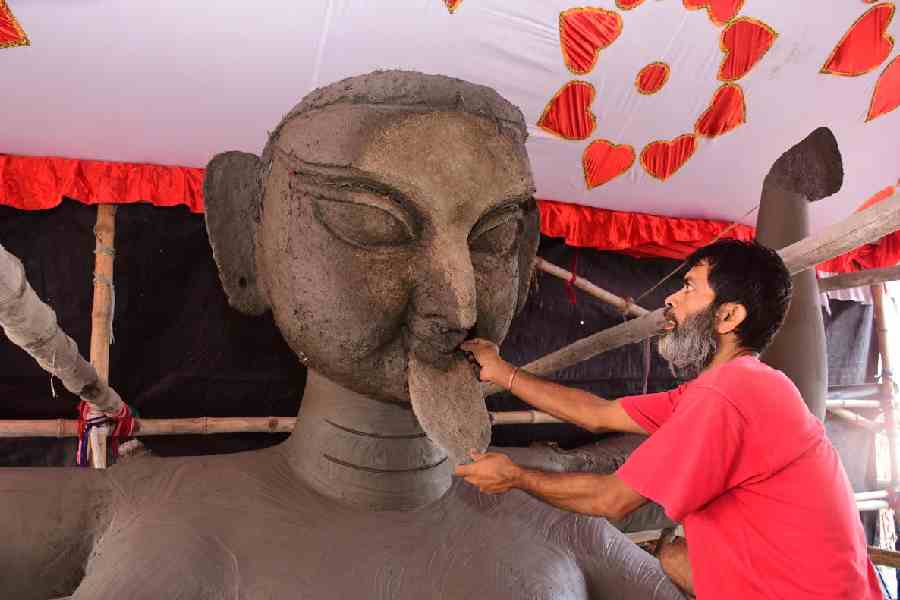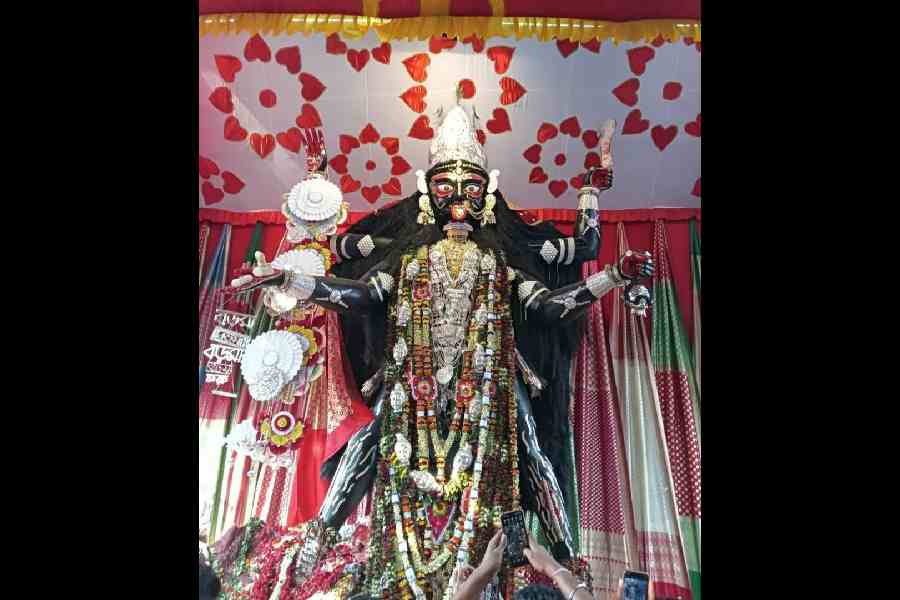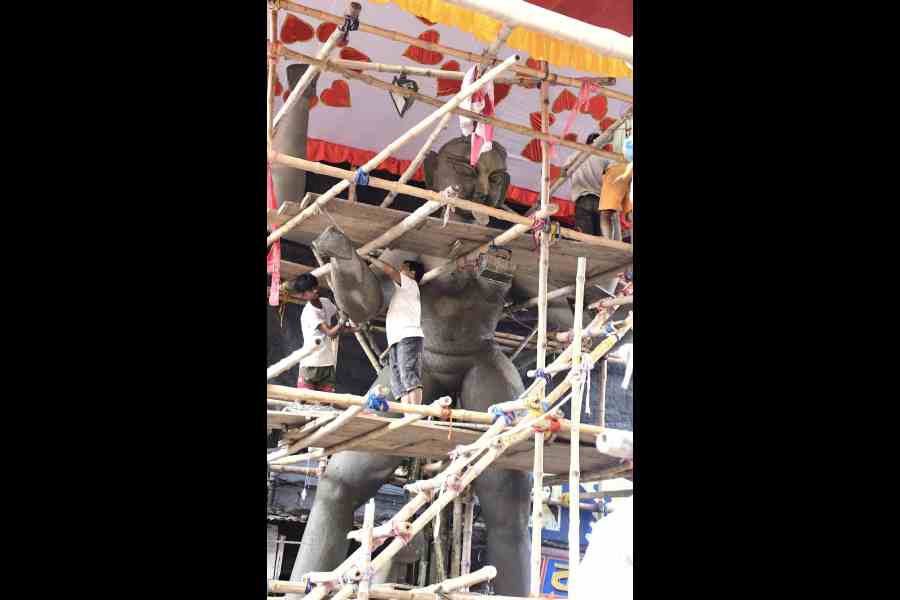Along with Durga Puja, Kali Puja has its own place and vibe in Calcutta and is celebrated with much fervour all around the city. But why do millions of devotees travel to catch one glimpse of Naihati’s Boro Maa? Located 43.1km away from Calcutta, in the town of Naihati in North 24-Parganas district, stands an awe-inspiring 21-feet-tall idol of Goddess Kali, affectionately known as Boro Maa, meaning ‘Big Mother’.
Towering in her stature, this embodiment of divine force has a black complexion, four hands, and a crimson-red tongue bordered by gold, and piercing eyes that exude both warmth and strength. The aura surrounding Boro Maa is enhanced by her captivating presence and symbolic details, that draw devotees from near and far.
The celebration of Naihati’s Boro Maa dates back to 1923 when it was founded by Bhavesh Chakraborty. Chakraborty was inspired by a visit to Nabadwip’s Rash Puja — a festival known for its grand worship of huge idols — and decided to introduce a similar celebration in his hometown. Thus, he commissioned a larger-than-life idol of Goddess Kali, known initially as Boro Kali, to signify her grandeur. For decades, the Chakraborty family organised and managed this puja. However, in 2011, the family decided to hand over the celebration to the people of Naihati, transitioning the idol’s name to Boro Maa, symbolising her as the mother of all.

One of the most fascinating aspects of Naihati’s Boro Maa is her distinctiveness from other depictions of Goddess Kali. Traditional idols of Kali often include a jackal, her nocturnal companion in cremation grounds. However, Boro Maa does not have a jackal by her side, as her worship follows the belief of Vaishnavism, which emphasises compassion and divinity. This interpretation of Kali reveals her as a force of duality — a protector and a destroyer of evil. Boro Maa’s four hands carry symbols with meanings. Her right upper hand is raised in a blessing gesture, offering reassurance to her devotees, while the right lower hand holds a jolbhora sandesh, signifying sweetness, reward and prosperity to those who lead virtuous lives. Her left upper hand holds her weapon, symbolising her power to eradicate evil and her left lower hand grasps the severed head of a wrongdoer, a reminder of wrongdoings. Through these emblems, Boro Maa expresses the duality of Kali as both nurturing and fearsome, reminding devotees of the balance of reward and punishment.
Preparations for Boro Maa’s celebration begin right after Lakshmi Puja. Since 2014, local sculptor Shubhendu Sarkar has been responsible for sculpting the 21-feet-tall idol, a challenging task given the limited time and immense scale. Despite the tight eight-day deadline, Sarkar feels an inexplicable force guiding his hands. He shared that while carving Boro Maa’s face, his eyes often get filled with tears as he brings the Goddess’s compassionate and fierce expression to life.
Boro Maa is adorned with 100kg gold and 200kg silver jewellery. These ornaments are made from small jewellery pieces and bindis contributed by people from all walks of life over the span of 100 years. These adornments symbolise the collective devotion of the community, with each item carrying the wishes and prayers of a devotee.

A poignant part of Boro Maa’s celebration is her immersion ceremony. Situated just a few steps away from the Ganges, the idol is mounted on a large, wheeled trolley, enabling the townspeople to transport her to the river for immersion. Hundreds of men come together to guide the massive idol along the procession route, adorned with vibrant garlands crafted by garland makers from Howrah. As the people of Naihati bid farewell to their mother with tearful eyes, the procession is a powerful emotional moment and a must-visit for outsiders, something just like Ganesh Visarjan in Mumbai.
For those who seek to witness divine energy in its grandest form, a visit to Boro Maa in Naihati during Kali Puja is a journey worth making.
Rohini Chakraborty Pictures: Biswajit Kundu and Instagram page of@boromaanaihati











